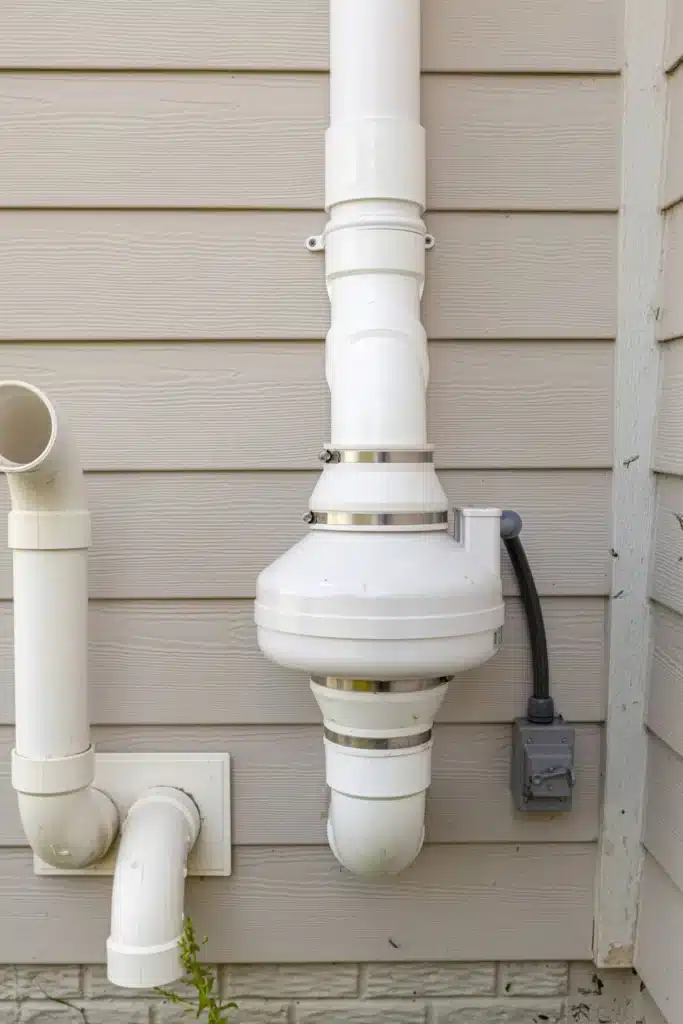Owning a home is a substantial and exciting step in life. But, along with the joy of creating lasting memories, homeowners find themselves as silent sentinels, protecting their homes from various lurking hazards – both visible and invisible. Radon might sound like a character from a sci-fi novel, but trust me, it’s no fiction. This natural, radioactive gas is as real as you and me and poses a threat to homeowners like us. Does Radon smell? No, Radon gas is found in the soil and it is a gas that is odorless, colorless, and tasteless.

What is Radon?
Let’s break it down. Radon, often dubbed “the silent killer,” is a colorless, tasteless, and odorless gas that arises naturally from the earth. Sounds harmless, right? But there’s more than meets the eye. The sinister part about radon is its radioactivity. Once inhaled, it could damage tissues in your lungs due to its radioactive decay, which may lead to lung cancer over time. It’s something you wouldn’t want lurking in your home, I can assure you that!
Sniffing Out Silent Danger: Does Radon Smell?
No, radon does not have a scent or smell. If this stealthy gas makes a home in your living space, you won’t know without testing, Also, Radon isn’t picky. It can be found all over the U.S., whether in bustling cities or quiet country homes. Since it emanates from the soil, radon can seep into any building type via cracks or gaps.
Where Are The Highest Levels of Radon Found?
Mountains, old mines, and certain types of soil are high-risk areas. Areas such as the Appalachian Mountain range, Northern Plains, and parts of the Rocky Mountains are known to have higher radon levels.
Radon Exposure: A Risk to Home Comfort
Long-term exposure to radon carries serious health risks, including lung cancer. It’s the second leading cause of lung cancer deaths after smoking. Think about it–an invisible specter possibly lurking in your home, jeopardizing your health.

Radon Testing: You Can’t Manage What You Can’t Measure
Radon testing is pretty straightforward. It is important to hire professionals to do in-home testing. Regular testing is key because radon levels tend to fluctuate over time. If Enviroquest finds you have high radon levels, don’t fret! Radon mitigation systems can help reduce the levels in your home significantly. These systems work by reducing the amount of radon that can enter your home from the soil below. Enviroquest can recommend what will work best for your home.
Other Recommended Maintenance
Now that you know about radon, let’s take a look at a few other areas of recommended maintenance. One of those is radon testing. There is a myth that you don’t have radon if you don’t have a basement. That is not true! Radon doesn’t need a basement to have high levels. It comes from the soil and can go into the home through cracks in the foundation or other gaps. It is important to have the home tested.
Another is buying a home with a radon mitigation system. This is a great idea as you already know that the system is in place and providing a safe environment for you and your family. If you want to buy a home that doesn’t have the system, you can always negotiate for radon testing to be done or for a system to be installed.
Lastly, many homeowners want to know what goes into the cost of a radon mitigation system. It depends on aesthetics, radon levels, dirt, venting, foundation, and sealing of the home.
When Do I Call a Professional?
If you live in an area that is known to have high levels of radon or bought a home and want to check on the levels, contact a professional home inspection company that does radon testing and mitigation. It is a good idea to test every two years. You want to hire a company that understands radon and has the tools necessary to find out if your levels are high. It is worth to cost to save your family and loved ones.
Conclusion
Radon isn’t something to sweep under the rug–it’s a real and present danger. But with regular testing and the right mitigation strategies, you can keep your home safe and breathe easy. It is higher during the colder months because the home is sealed off from outside air. However, it can also be high levels year-round. While you are looking into radon testing, it is also a good idea to have a home inspection as well. Your safety is important. Reach out to Enviroquest Home Inspections for radon testing, mitigation, or complete home inspection in Harrisburg, PA.
